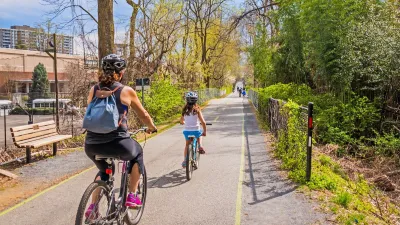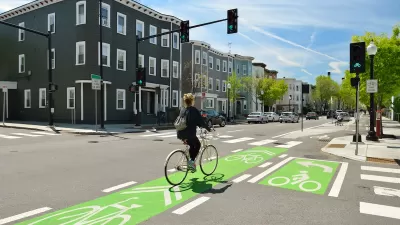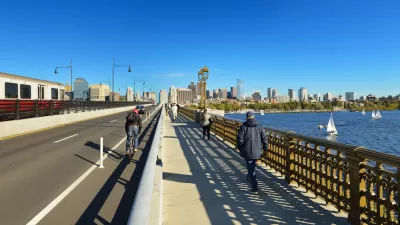The city wants to drastically reduce carbon emissions, but bike advocates argue it has not done enough to make biking and walking in the city safer and more convenient.

Writing in San Diego Magazine, Andrew Bowen-Ataide calls out the city of San Diego’s lukewarm commitment to improving its bike infrastructure and making biking a safe and convenient mode of transit for its residents.
Despite a pledge to make biking, walking, and transit more convenient in its 2015 Climate Action Plan, Bowen-Ataide argues that “What followed, however, were several years of city leaders patting themselves on the back while carefully avoiding the hard conversations around what drivers may have to sacrifice in pursuit of a more sustainable transportation system.”
The article provides several examples of proposed improvements to bike and pedestrian infrastructure that fell victim to pushback from opposing groups and were watered down or nixed altogether.
Bowen-Ataide acknowledges the progress made by the city during the pandemic, which brought new opportunities to reclaim public right-of-way from cars. And the city’s August 2022 update to the Climate Action Plan calls for “net zero emissions” by 2035. “Half of all trips in all neighborhoods across the city—whether to work, school, a bar, or the grocery store—will have to be made without a car,” Bowen-Ataide writes. “But the city hasn't yet committed to a detailed timeline or funding strategy for its new climate goals. And building a more bike-friendly city will require San Diego leaders to spend both money and political capital.”
FULL STORY: Stranded in the Bike Lane

Study: Maui’s Plan to Convert Vacation Rentals to Long-Term Housing Could Cause Nearly $1 Billion Economic Loss
The plan would reduce visitor accommodation by 25,% resulting in 1,900 jobs lost.

North Texas Transit Leaders Tout Benefits of TOD for Growing Region
At a summit focused on transit-oriented development, policymakers discussed how North Texas’ expanded light rail system can serve as a tool for economic growth.

Using Old Oil and Gas Wells for Green Energy Storage
Penn State researchers have found that repurposing abandoned oil and gas wells for geothermal-assisted compressed-air energy storage can boost efficiency, reduce environmental risks, and support clean energy and job transitions.

Santa Barbara Could Build Housing on County Land
County supervisors moved forward a proposal to build workforce housing on two county-owned parcels.

San Mateo Formally Opposes Freeway Project
The city council will send a letter to Caltrans urging the agency to reconsider a plan to expand the 101 through the city of San Mateo.

A Bronx Community Fights to Have its Voice Heard
After organizing and giving input for decades, the community around the Kingsbridge Armory might actually see it redeveloped — and they want to continue to have a say in how it goes.
Urban Design for Planners 1: Software Tools
This six-course series explores essential urban design concepts using open source software and equips planners with the tools they need to participate fully in the urban design process.
Planning for Universal Design
Learn the tools for implementing Universal Design in planning regulations.
Ascent Environmental
Borough of Carlisle
Institute for Housing and Urban Development Studies (IHS)
City of Grandview
Harvard GSD Executive Education
Toledo-Lucas County Plan Commissions
Salt Lake City
NYU Wagner Graduate School of Public Service





























